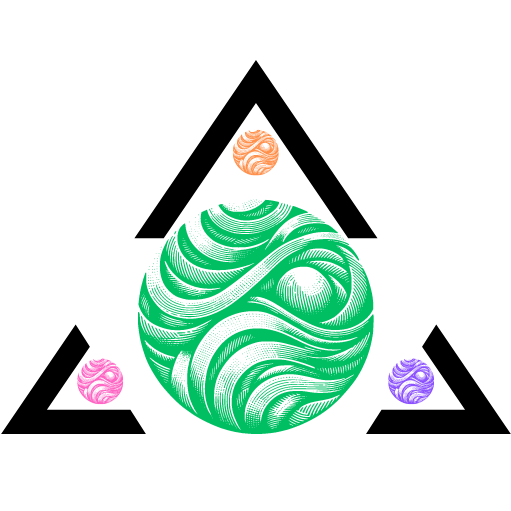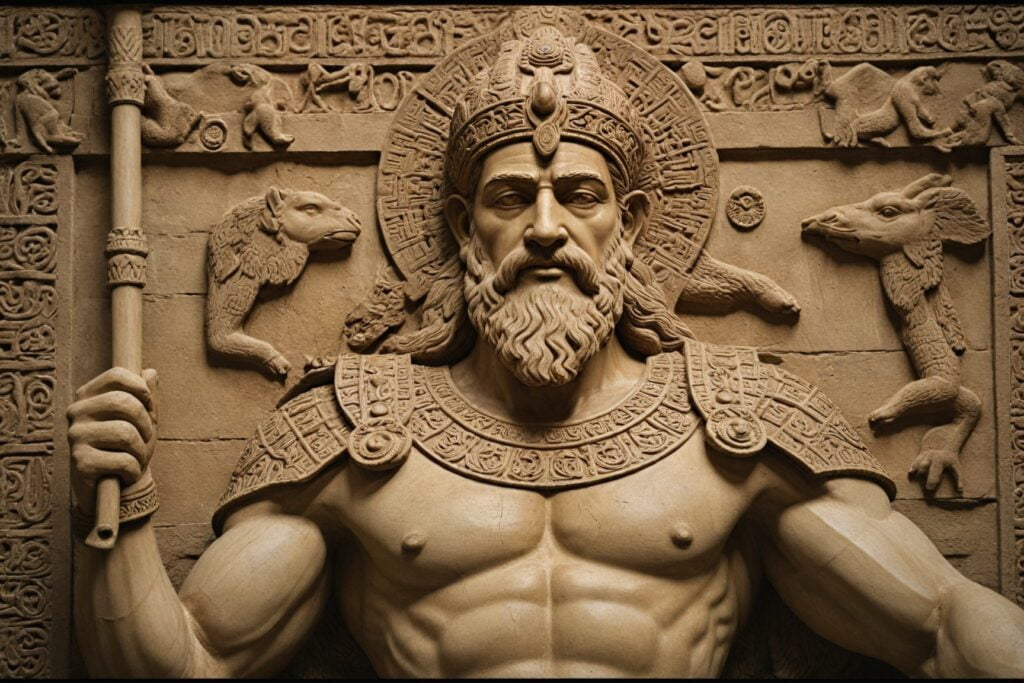The ancient Sumerian religion, one of the earliest known systems of belief, flourished in Mesopotamia over 4,000 years ago. This complex and richly detailed belief system not only influenced the cultures that followed but also offers a fascinating glimpse into the spiritual and daily life of the Sumerians. This article delves into the gods, myths, and rituals that defined Sumerian religion, exploring its lasting impact on human history.

The Pantheon of Sumerian Gods
The Sumerians worshipped a pantheon of gods, each with distinct roles and attributes. At the top of this hierarchy were the major deities who governed the cosmos and aspects of human life.
Anu – The Sky God
Anu, the god of the sky, was considered the supreme deity. He was the father of the gods and the ruler of the heavens. Anu’s primary role was to uphold order and justice in the universe, ensuring that the other gods fulfilled their duties.

Enlil – The God of Air
Enlil, another central figure, was the god of air and the chief god of Nippur. He was a powerful and unpredictable deity, often associated with both creation and destruction. Enlil controlled the weather and was believed to be responsible for the growth of crops, making him crucial for agricultural societies.

Enki – The God of Water and Wisdom
Enki, also known as Ea, was the god of water, wisdom, and creation. He resided in the subterranean freshwater ocean called the Abzu. Enki was a benevolent deity, often helping humanity with his vast knowledge and intelligence. He played a key role in many myths, including the creation of humans.

Inanna – The Goddess of Love and War
Inanna, also known as Ishtar, was the goddess of love, beauty, sex, fertility, and war. She was one of the most prominent deities in the Sumerian pantheon, worshipped in many city-states. Inanna’s dual nature as a goddess of both love and war reflects the complexities of human existence and the Sumerians’ understanding of life’s contradictions.

Sumerian Myths: Stories of Gods and Heroes
The myths of the Sumerians are rich narratives that explain the origins of the world, the gods, and humanity. These stories were recorded on clay tablets in cuneiform script and have survived through the millennia, providing valuable insights into Sumerian culture and beliefs.
The Epic of Gilgamesh
One of the most famous Sumerian myths is the “Epic of Gilgamesh.” This epic poem tells the story of Gilgamesh, the king of Uruk, and his quest for immortality. Alongside his friend Enkidu, Gilgamesh embarks on a series of adventures that explore themes of friendship, mortality, and the quest for eternal life. The epic also includes a flood narrative similar to the biblical story of Noah, indicating a shared cultural memory of a great flood in ancient Mesopotamia.

The Descent of Inanna
“The Descent of Inanna” is another significant myth that describes the goddess Inanna’s journey to the underworld. Inanna seeks to extend her power to the realm of the dead but is ultimately struck down by Ereshkigal, the queen of the underworld. This myth highlights the themes of death and rebirth, as Inanna is eventually resurrected, symbolizing the cyclical nature of life and the changing seasons.

The Creation of Humanity
According to Sumerian mythology, humans were created by the gods to serve them. The myth of Enki and Ninmah describes how Enki, with the help of the mother goddess Ninmah, created humans from clay. This myth underscores the belief that humans were designed to work and worship the gods, maintaining the divine order.

Sumerian Religious Practices and Rituals
Religion was deeply integrated into the daily life of the Sumerians. Their religious practices included temple worship, festivals, and rituals aimed at appeasing the gods and ensuring their favor.
Ziggurats: Temples of the Gods
Ziggurats were massive temple complexes that served as the centers of worship and community life. These towering structures, with their terraced levels, were believed to be the dwelling places of the gods on earth. The most famous ziggurat is the Great Ziggurat of Ur, dedicated to the moon god Nanna. Priests conducted rituals and offered sacrifices at these temples to honor the gods and seek their blessings.

Festivals and Holy Days
The Sumerians celebrated numerous festivals throughout the year, each dedicated to specific deities. These festivals often coincided with agricultural cycles, reflecting the importance of farming in Sumerian society. One notable festival was the Akitu, or New Year festival, which involved elaborate ceremonies and the re-enactment of myths to ensure the renewal of the king’s divine mandate and the fertility of the land.
Divination and Magic
Divination was a common practice in Sumerian religion, used to interpret the will of the gods and predict future events. Priests would read omens from the liver of sacrificial animals, celestial patterns, and other natural phenomena. Magic and incantations were also integral, employed to protect against evil spirits, cure diseases, and ensure successful crops.

The Legacy of Sumerian Religion
The influence of Sumerian religion extended beyond the borders of Mesopotamia. Its myths, deities, and religious practices were adopted and adapted by subsequent civilizations, including the Akkadians, Babylonians, and Assyrians. Many aspects of Sumerian religion can be seen in later Mesopotamian cultures, demonstrating its enduring legacy.

Influence on Later Religions
Elements of Sumerian mythology, such as the flood narrative and the hero’s quest, can be found in later religious texts, including the Hebrew Bible and Greek mythology. The Sumerian pantheon also laid the groundwork for the gods of the Akkadian and Babylonian empires, with many deities retaining their Sumerian characteristics and stories.
Archaeological Discoveries
The rediscovery of Sumerian civilization in the 19th and 20th centuries through archaeological excavations has provided a wealth of knowledge about their religious practices. Artifacts, temple ruins, and clay tablets have allowed historians and scholars to reconstruct the Sumerian worldview and its impact on subsequent cultures.

Conclusion
The Sumerian religion, with its intricate pantheon, captivating myths, and elaborate rituals, offers a profound insight into one of the world’s earliest civilizations. Understanding Sumerian religion not only enriches our knowledge of human history but also highlights the universal themes and questions that have shaped humanity’s spiritual journey. As we continue to explore and interpret the remnants of Sumerian culture, we uncover the enduring legacy of these ancient beliefs and their influence on the religious traditions that followed.











